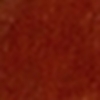What were the colors of the old masters?
March 19th, 2009
These are color samples of historical pigments that I used in my own oil paintings. A general observation: the historical western art pigments are more subdued than modern synthetic pigments. This has an important consequence for painting, namely, that in the past artists could work with the pigments, trying to show their characters in the best and most intense way. Modern pigments, by contrast, are loud and strident when used pure, meaning that the modern painter must continually fight against and obscure the intrinsic characters of the colors. For example, modern synthetic ultramarine blue — how many paintings have been spoiled by this saccharine color? Purified natural ultramarine, by contrast, is the loveliest color imaginable. [Here is an example of a painting using historical colors.]

madder red lake

red earth

vermilion

yellow earth

gold leaf

lead tin yellow

verdigris

azurite blue

ultramarine blue

vegetable black

lead white
Mimic with with a mixture of zinc and titanium whites and a bit of raw siena (read more).
These are the core colors used for oil and egg tempera painting from the early Renaissance well into the 19th century. Here are some other colors that were used:
- kermes lake (a cool red lake)
- lac lake (similar to kermes)
- indigo (dark blue)
- green earth (soft green)
- orpiment (bright yellow/orange, poisonous)
- malachite (green)
- copper resinate (a moss-green, modified verdigris)
- white chalk (used in painting grounds)
In my next post I will discuss how to mimic these with modern colors, and the difficulties therein.
[19 April 2009]